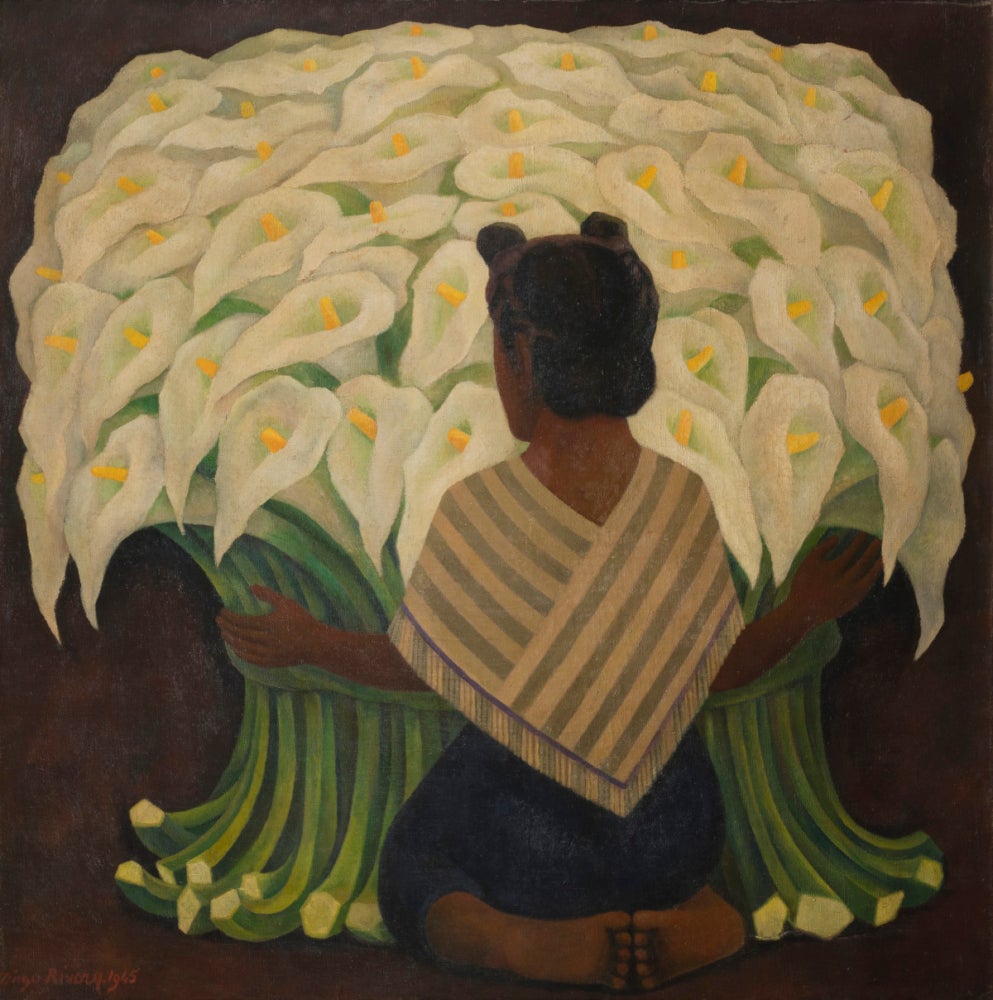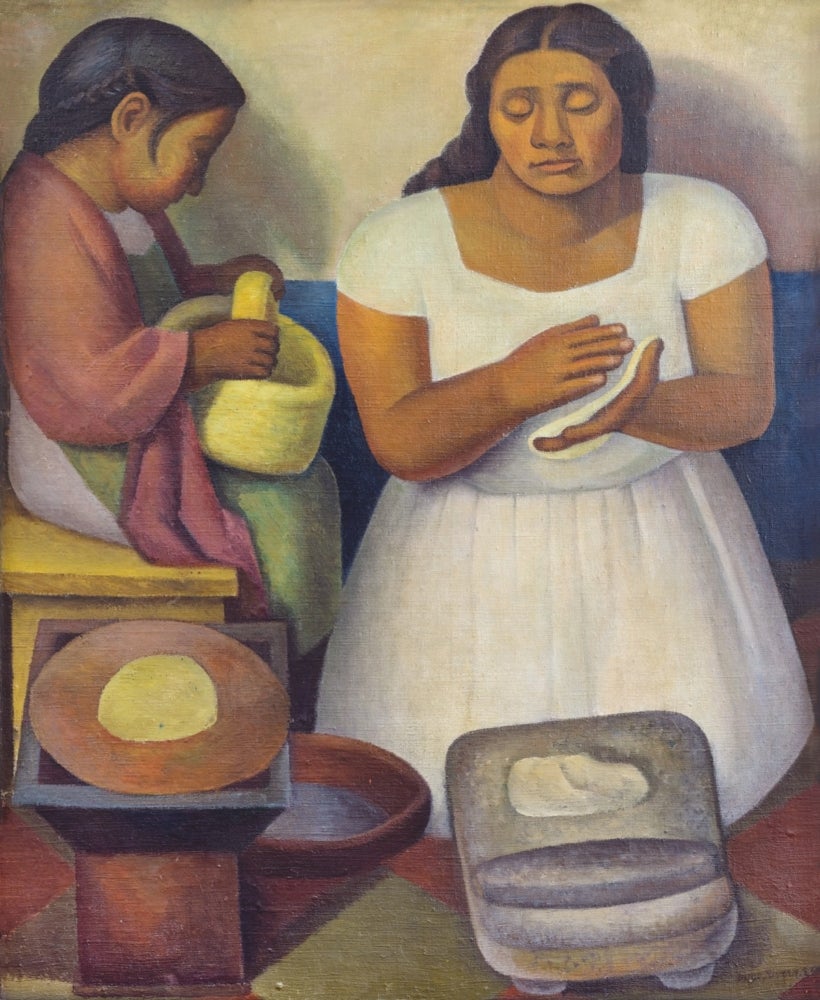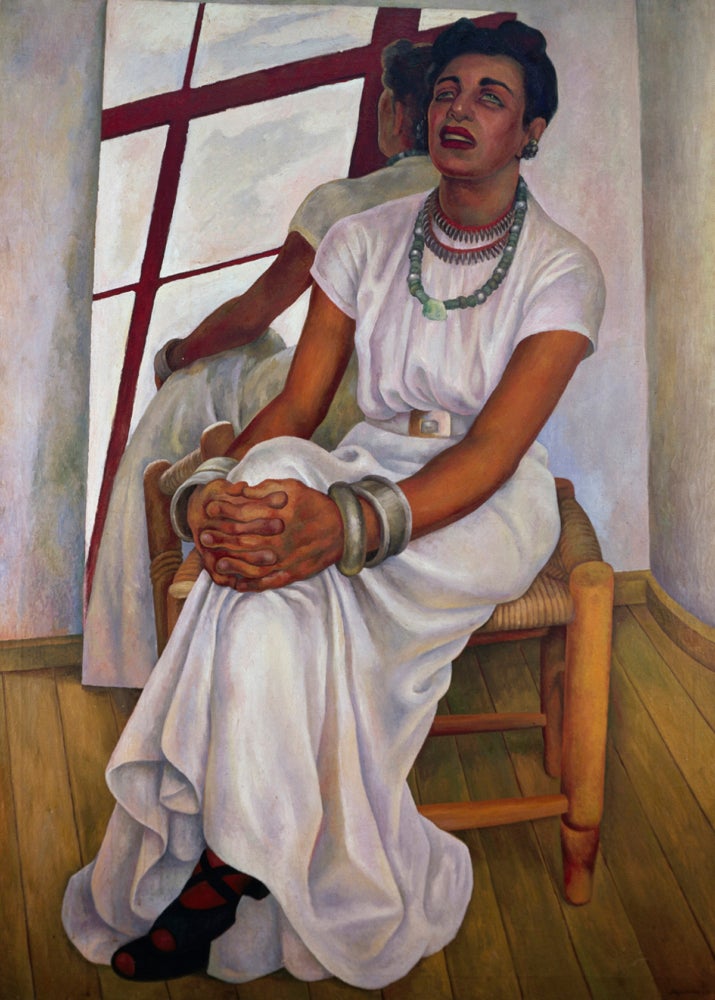
Diego Rivera’s America makes its final stop at Crystal Bridges Museum of American Art in Bentonville, Arkansas. The Museum touts the opportunity to showcase a high-profile, large-scale exhibition by welcoming the rare works to ‘the heartland’— promising a critical and contemporary interpretation of 130 of Rivera’s most significant pieces created from the 1920s to the 1940s. Curated by James Oles, guest curator, with Maria Castro, assistant curator at SFMOMA, and coordinated at Crystal Bridges by Jen Padgett, the museum’s acting Windgate curator of craft, the exhibition includes sketches, drawings, paintings, and interactive displays, as well as three filmed projections of murals in Mexico City and San Francisco.
In anticipation of this historic exhibition I wonder about the context: does the exhibition ask one to contemplate Rivera’s social/cultural/political dreams and to consider if this is a place where the Indigenous, the working class, and the economy survive in tandem— or is this a place of capitalist enterprises, where money, factories, and cheap labor reign supreme over the land, policy, and people?
The exhibition is housed the Museum’s temporary gallery, which is in a floor-to-ceiling glass corridor overlooking a water feature fed by the White River and surrounded by five miles of wilderness. Past the exhibition entrance, is the institution’s Indigenous Peoples Acknowledgement, a statement that notifies visitors of the Museum’s role in the colonization of the Caddo, Quapaw, and Osage peoples’ land on which the museum sits. Through this acknowledgement, the institution intends to make itself accountable for dismantling past, present, and future settler narratives.
Inside the gallery, the brightness of the outside world dissipates. In Diego Rivera’s America, I am welcomed to view his work as a force of radical change and to see his belief in modernity and the machine, as well as his dedication to the working class. Rivera is situated as a storyteller by means of paper, easel, and walls; he is an artist who imagined the blurring of two nations (US and Mexico)— an artist who believed, through public/social engagement, art could be a uniting and revolutionary force.
The exhibit makes use of large black and white info panels in both Spanish and English to provide context for the curated sections and the works within them. Chronologically organized, the text shares a narrative of events that informed Rivera’s life, work, and fame. The show begins with ‘An Allegory for Mexico’ with pieces made in the wake of the Mexican Revolution (1910-1920), which describes Rivera’s early dedication to portraying Mexico’s racial diversity, culture, womanhood, and creative spirit. Here we see him push politically and creatively for a new Mexican identity through art.

A pre-recorded broadcast on the wall shows Rivera’s first government-commissioned mural Creation (1922) in Mexico City. In the digital recording two musicians play wind instruments as the backdrop to the renaissance style, allegorical painting that pays homage to a blending of global social, cultural histories, using both mythological and religious themes.
Departing from some of his earliest works is the section ‘Daily Life’, the works displayed show the heavy influence that Indigenous traditions and Mexican woman/motherhood had on Rivera. Here we see a dedication to the Aztec roots that continue to exist in Mexico through Oaxacan labor, land, family, and agriculture. Painted with a sense of pride and tranquility, the pieces omit any signs of modernity. These examples are most notable in the section ‘South to Tehuantepec’ with pieces such as La molendera (The Grinder) (1926) and Mujer mexicana con canasta (Mexican Woman with Basket) (1935). In Women Washing Clothes in a River Among Buzzards (1928) Diego paints the back-breaking work of an unidentifiable indigenous woman look effortless and appears as a romantic dedication to the dignity he saw in the daily life, customs, and traditions of this region.
Departing from these pieces we see the space begin to present works that encompass Rivera’s vivid imagining of a new nation that might grow from mestizos into the concept of mestizaje, a “blend of Indigenous and European cultures and races.” In the following rooms Diego’s rise to fame is palatable— the narrative shown through the accompanying descriptions of the sections and works highlight wealthy friends and donors that helped Diego reach the upper crust of American society. These works hang in the balance between Diego’s longing to rectify Indigenous/Mexican/US/Western histories and identities with capitalism, industrialization, and war— alongside Rivera’s growing embrace of socialist and communist ideals. The tension between the works is distinct as viewers witness Rivera’s crossover into America high society in Allegory of California (1931), another video recorded mural where you can watch as waiters and socialites walk past the mural in front of the City Club of San Francisco’s Stock Exchange Tower. The sections that follow, specifically ‘Diego’s Circle,’ pay homage to American high society, as seen in the portrait of Edsel B. Ford (1932). Rivera had become a staple in the commodification of American art in popular culture through 1940s, as detailed in color footage from Art in Action Exhibition (1939-1940). Televised on a screen in the gallery, the footage shows Rivera and his many assistants take part in the mural production process and the construction of one of Diego’s most notable works.
In the center of the Exhibition, sits one of the only notable anachronous pieces on display, Rivera’s Pan American Unity (1940)— so intricate and vast that it was only fully shown through a slowly moving panorama on a museum screen. The 22 by 74 foot work is the culmination of the parables present in Rivera’s work. The mural is painted against the cool colors of the San Francisco Bay area and reflected the times in which Rivera imagined that cultures could cross time and borders to unite in solidarity against fascism and the Nazis with industry, science, progress, modern and indigenous technologies, and labor. Rivera choreographed symbolism throughout the mural with his painted narratives of people— celebrities, prominent figures, labor workers, and visions of the everyday. Within these renderings, sits a manifestation of one of Rivera’s constant themes: matriarchy and spirituality. A representation of the Cōātlicue, the symbol of the Mexican earthmother, sits next to the rendering of a machine widely used in US assembly line factories. With the color choices and soft painting style Rivera makes uniting indigenous history and capitalist agendas against colonialism and fascism aesthetically beautiful.
The tensions between the reality of the modern world’s relationship between progress, communism, and indigenous ways of life erupts with the curated story of Diego’s falling out with American high society over his socialist and communist ideologies. This portion of the show details the ostracization of Rivera by the Rockefeller family in New York, and the destruction of his unfinished fresco at Rockefeller Center, Man at the Crossroads (1933-1934), which promoted a Communist worker-controlled society in contrast to the existing capitalistic enterprises.

The final room feels generically thrown together, however there are two very telling works in this space. Desnudo con alcatraces (Nude with Calla Lilies) (1944) sits opposite the Retrato de Lupe Marín (Portrait of Lupe Marín) (1938), possibly a curatorial nod to the paradox between Rivera’s dedication to the humble sensuality of the subjects in his homeland, which always seemed to be in opposition to his visions. In his artworks he magnificently constructs a world where Mexico, together with the US might confront its violent and unjust relationship with Indigenous peoples and their land, a world where wealthy Eurocentric patrons could understand the implications of their existence—but the question lingers, as it sits on stolen land in a museum sponsored by corporations, can his work rectify the two? Will his paintings always exist as a myth?
Rivera painted his visions into his murals—a united North America where socialism, indigeneity, labor, industrialization, and popular culture could coexist, and in doing so, repair the injustices of colonialism, war, and segregation. Even capitalism was a part of his idealized vision. Yet history, and the treatment of Rivera’s work in America shows that this was not in the cards for Mexico and America on a grand scale. The show concludes with Portrait of Corliss Lamont (1954), an American socialist and humanist philosopher—where just beyond view is a very stocked gift shop.




